
The sap beetles, also known as Nitidulidae, are a family of beetles.
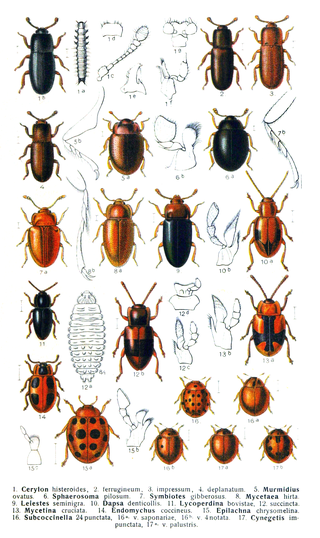
Cucujoidea is a superfamily of beetles. This group formerly included all of the families now included in the superfamily Coccinelloidea. They include some fungus beetles and a diversity of lineages of "bark beetles" unrelated to the "true" bark beetles (Scolytinae), which are weevils.
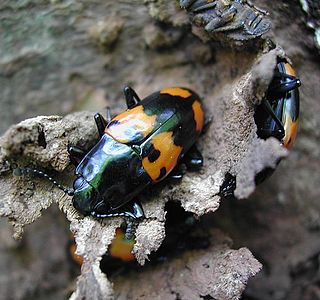
Megalodacne is a genus of fungivorous beetles in the family Erotylidae.
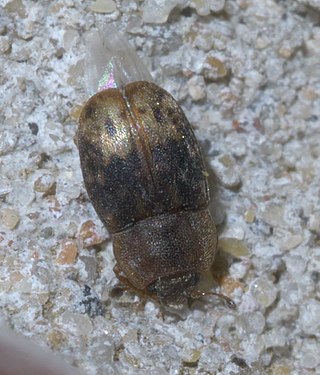
Omosita is a genus of sap beetles, erected by Wilhelm Ferdinand Erichson in 1843.

Cybocephalus is a genus of beetles in the family Cybocephalidae, previously belonging to the subfamily Cybocephalinae of the family Nitidulidae, and comprising over 200 described species.

Glischrochilus hortensis is a species of beetle in the genus Glischrochilus of the family Nitidulidae. The genus are commonly known as 'sap-beetles'.

Nitidulinae is a subfamily of sap-feeding beetles in the family Nitidulidae. There are about 17 genera and at least 70 described species in Nitidulinae.

Glischrochilus quadrisignatus, known generally as four-spotted sap beetle, is a species of sap-feeding beetle in the family Nitidulidae. Other common names include the beer bug and picnic beetle. It is found in North America.

Cryptarchinae is a subfamily of sap-feeding beetles in the family Nitidulidae. There are at least 3 genera and about 17 described species in Cryptarchinae.
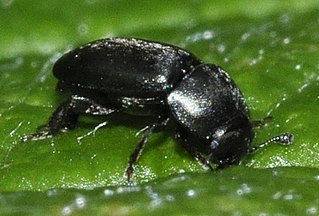
Meligethes is a genus of pollen beetles in the family Nitidulidae. There are more than 80 described species in Meligethes.

Pityophagus is a genus of sap-feeding beetles in the family Nitidulidae. There are about six described species in Pityophagus.
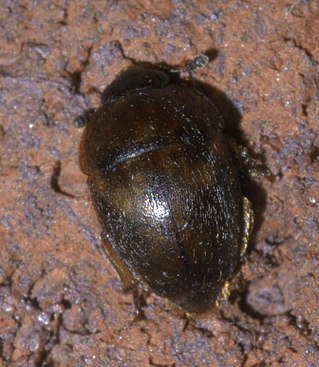
Amphicrossus is a genus of sap-feeding beetles in the family Nitidulidae. There are about nine described species in Amphicrossus.

Cyllodes is a genus of sap-feeding beetles in the family Nitidulidae. There are about 14 described species in Cyllodes.

Soronia is a genus of sap-feeding beetles in the family Nitidulidae. There are about 14 described species in Soronia.

Urophorus is a genus of sap-feeding beetles in the family Nitidulidae. There are at least two described species in Urophorus.
Camptodes is a genus of sap-feeding beetles in the family Nitidulidae. There are about nine described species in Camptodes.

Phenolia is a genus of sap-feeding beetles in the family Nitidulidae. There are about nine described species in Phenolia.
Glischrochilus vittatus is a species of sap-feeding beetle in the family Nitidulidae. It is found in North America.
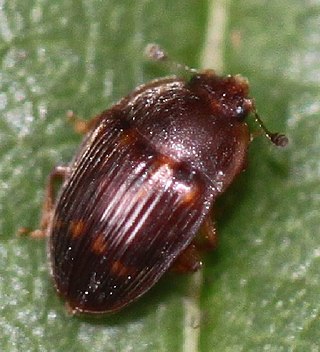
Stelidota is a genus of sap-feeding beetles in the family Nitidulidae. There are about 15 described species in Stelidota.
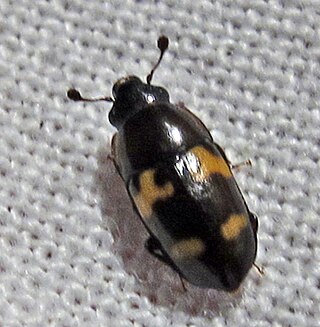
Glischrochilus fasciatus, the picnic beetle, is a species of sap-feeding beetle in the family Nitidulidae. It is found in Central America and North America.



















